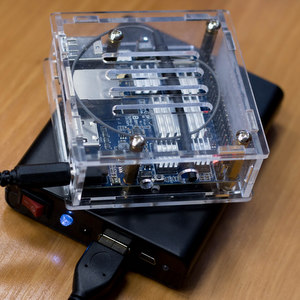A group of Russian-American scientists recently published in Future Generation Computer Systems (FGCS) journal their article about data transferring in emergency and disaster situations like Hurricane Irma - the most devastating hurricane in the Atlantic over the last decade. The mathematical method proposed by scientists outperformes all related world analogies.
Scientists of University of Missouri-Columbia (USA) Samara University (Russia) and Saint Louis University (USA) presented theoretical results which describe the organization of reliable data transmissions in the absence of an infrastructure such as LTE base stations. This technology is in demand in emergency situations, technogenic and natural disasters. Scientists propose to use smartphones and other mobile devices (e.g., tablets, Google glasses, bluetooth beacons, etc) as a transmitters. They form a self-organized network and can transfer data (e.g., text messages or video streaming) to some destination. Researchers specify that during disasters, "obstacles" appear on paths. Such ``obstacles'' can be destroyed buildings or natural geographic "voids" (lakes, gullies, hard-to-reach mountainous terrain) where there are likely no people, and hence lack of mobile devices. For such situations scientists proposed to calculate the route, using the electrostatics laws of physics such as the law of potential difference and Coulomb's law.
In practice, it looks like this: on a map from a public resource (e.g., google maps), there are potential "obstacles" where people with mobile devices are unlikely to be - it means lack of connectivity that frequently results in packet drops in such areas. The center and the radius of these "obstacles" can be calculated using recent results in the machine learning area (e.g., by neural networks). This information is then broadcasted to all nearby mobile devices. When a packet arrives, the mobile device calculates where to send this packet next using the following mathematical formula: it uses the parameters of "obstacles", its own geographic coordinates and coordinates of all mobile devices in its radio-range.."The solution turned out to be simple and elegant," Andrei Sakhov, Samara University professor, said. “In fact, solving the problem from computer science area is reduced to a well-known solution from physics, on the basis of which we develop an algorithm. The programmer writes a mobile application. This way we offer a method at the intersection of physics, network technologies and machine learning.’
‘Theoretically we proved that the path "bypassing "is not much longer than if the packets were going through the shortest path," adds one of the project authors, a graduated student of the Samara University Dmitrii Chemodanov, who now is a forth year PhD student and works in the team of prof. Prasad Calyam at the University of Missouri-Colombia (MO, USA).
To confirm theoretical results, the scientists of prof. Prasad Calyam's group simulated data trasferring in a natural catastrophe on the (well-known NS-3) network simulator. "We have reconstructed the real tornado damages in Joplin, Missouri in 2011, which was assigned the 5th hazard category. It destroyed buildings of the regional medical center and school. There were more than hundred of killed and about a thousand of injured people,’ Dmitry Chemodanov said. “Maps which contain information about the consequences of such destruction have been taken from the US NOAA’s National Geodetic Survey site.”
The scientists analyzed where the injured people could be located, and how paramedics (who conduct a primary examination of the injured and determine the severity of injuries) could move there. Also, they labeled physical obstacle locations and estimated how effective the proposed algorithm was. "As a result, the work on the simulator confirmed our theoretical expectations," Dmitry Chemodanov said. “We have also described the size of the data and the structure of their storage. Thus, we have developed a protocol. This protocol works better in simulations than existing analogies and allows to maintain reliable high goodput (i.e., application level throughput) connections in the challenging conditions of disaster incidents, to transmit information, including video. Due to limited resources (people, hospitals and all kinds of supply) it is extremely important to deliver the injured people in time to the right specialists: people with immediate status - to surgeons, with minor injuries (minor or delayed status) - to the transshipment hospital. We propose to use our technology in such emergency situations to organize a crowdsourcing of photo, video and audio content to the headquarters, where the work of rescuers, firefighters, paramedics and policemen is coordinated.”
For reference
These studies are supported by the Ministry of Education and Science of the Russian Federation and National Science Foundation of the United States (NSF).
 RU
RU  EN
EN  CN
CN  ES
ES 